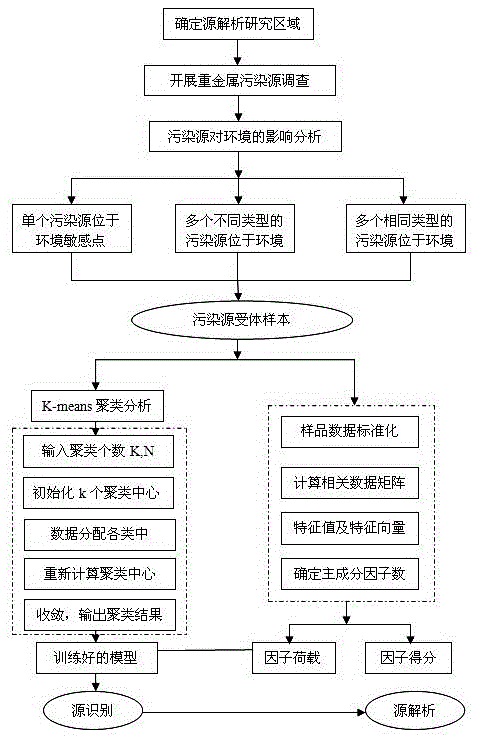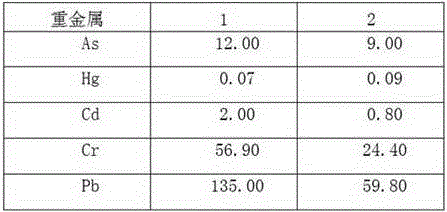Method for recognizing heavy metal pollution source in soil
A technology for pollution sources and heavy metals, applied in the field of heavy metal pollution source analysis, can solve the problem that the contribution rate of emission sources cannot be given, and achieve the effect of strong practicability and widespread application value.
- Summary
- Abstract
- Description
- Claims
- Application Information
AI Technical Summary
Problems solved by technology
Method used
Image
Examples
Embodiment
[0061] Step 1. The Jinjiang River Basin is used as the investigation area for heavy metal pollution.
[0062] Step 2, the data comes from the heavy metal content in the sediments of the Jinjiang River Basin, and the surface sediment samples of 10 stations were collected with a grab sampler.
[0063] Step 3: According to the survey area, determine the heavy metals to be investigated as As, Hg, Cd, Cr, and Pb, and take a total of 10 monitoring points.
[0064] Steps 4 to 7 refer to the following data analysis, in which data standardization processing and clustering analysis are completed with the help of SPSS statistical analysis software and programs edited by Matlab. The main analysis is as follows:
[0065] This data analysis mainly carried out K-means cluster analysis on As, Hg, Cd, Cr, and Pb, and the results are as follows:
[0066] Table 1 and Table 2 are the initial classification center and final classification center respectively, which are actually 2 types of classif...
PUM
 Login to View More
Login to View More Abstract
Description
Claims
Application Information
 Login to View More
Login to View More - R&D
- Intellectual Property
- Life Sciences
- Materials
- Tech Scout
- Unparalleled Data Quality
- Higher Quality Content
- 60% Fewer Hallucinations
Browse by: Latest US Patents, China's latest patents, Technical Efficacy Thesaurus, Application Domain, Technology Topic, Popular Technical Reports.
© 2025 PatSnap. All rights reserved.Legal|Privacy policy|Modern Slavery Act Transparency Statement|Sitemap|About US| Contact US: help@patsnap.com



